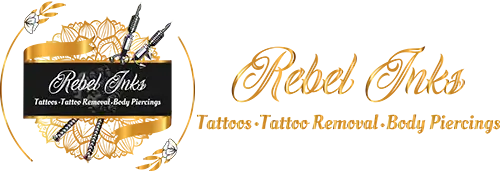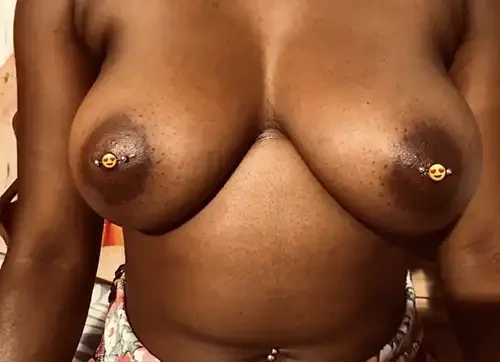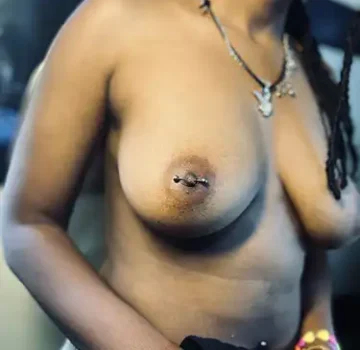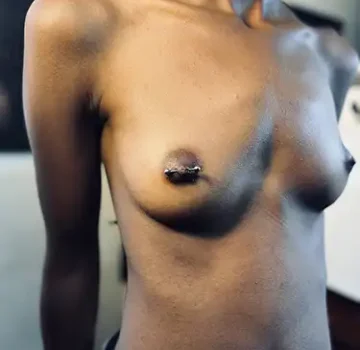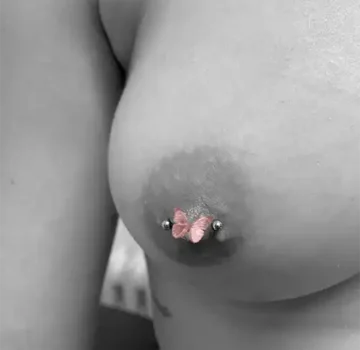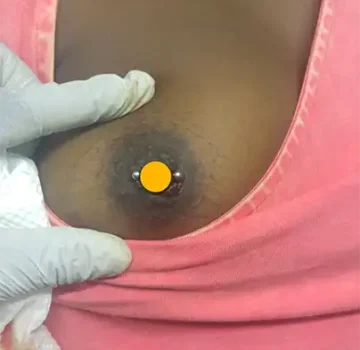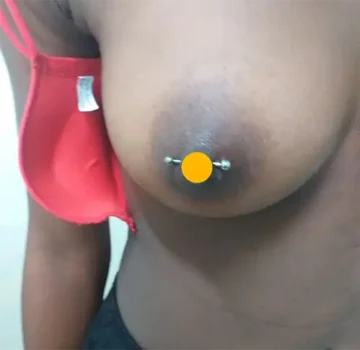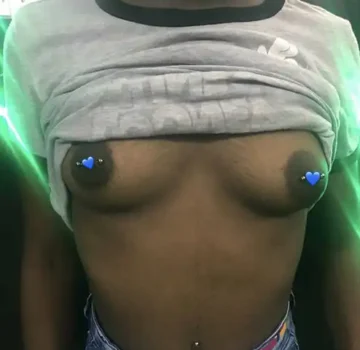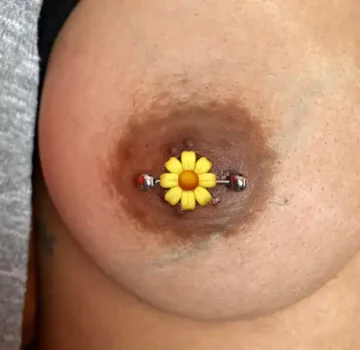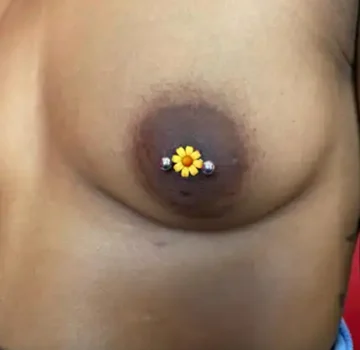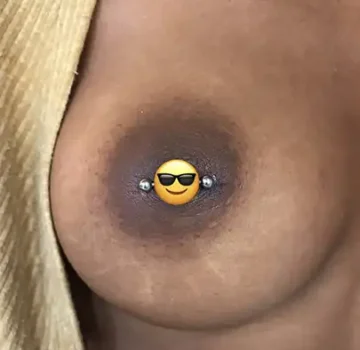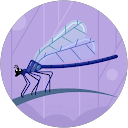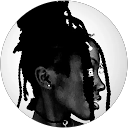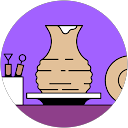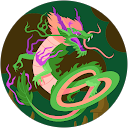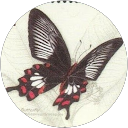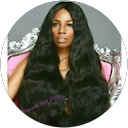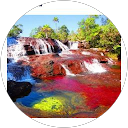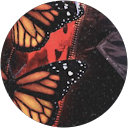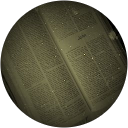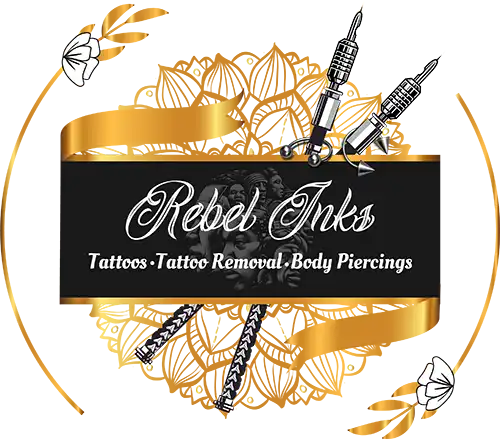Nipple Piercings
Key Features of Nipple Piercing
- Placement: Piercings can go horizontally, vertically, or at an angle through the nipple, depending on personal preference and anatomy.
- Jewelry: Common options include barbells, captive bead rings, and circular barbells, typically made from hypoallergenic materials like titanium, surgical steel, or gold.
- Healing Process: Takes about 6–12 months to heal fully, depending on aftercare and individual healing ability.
- Purpose: For many, it’s a bold aesthetic choice, while others enjoy its potential to enhance sensitivity or represent personal milestones.
Nipple Piercing Procedure: Step-by-Step Guide
Getting a nipple piercing is a straightforward process when done by a professional. Here’s what to expect:
- Preparation
– Consultation: Our piercer will discuss jewelry options, placement, and aftercare instructions.
– Health Check: Ensure you’re in good health, as illnesses or recent injuries may affect the healing process.
– Hygiene: At Rebel Inks Tattoos, Tattoo Removal, and Body Piercings Parlour follow strict sterilization protocols, including wearing gloves and using disposable needles. - Cleaning the Area: The piercer will clean and disinfect your nipple and surrounding skin to reduce the risk of infection.
- Marking the Piercing Site
– Our piercer will mark the entry and exit points with a surgical marker to ensure proper placement.
– You’ll have the opportunity to review the marks before proceeding. - Using a Clamp (Optional): A sterilized clamp may be used to stabilize the nipple and ensure precision during the piercing.
- Piercing
– A hollow, single-use needle is passed through the marked points.
– This step is quick and typically completed in one fluid motion. - Inserting Jewelry: Our piercer will immediately insert your chosen jewelry, usually a barbell or captive bead ring, made from high-quality, hypoallergenic material.
- Aftercare Explanation
– You’ll receive detailed aftercare instructions to promote healing and prevent infection.
– Our piercer will explain signs of potential complications, such as infection or rejection.
Procedure Duration
The entire process takes about 10–15 minutes per nipple, including preparation and cleaning.
Considerations before getting a Nipple Piercing
Getting a nipple piercing is a personal choice and body modification that should be carefully considered. Here are several important considerations before getting a nipple piercing:
- Health and Anatomy: Ensure you are in good overall health and that your nipples are free from any infections, irritation, or unusual lumps or bumps. Consult with a healthcare professional if you have any concerns about your nipple health.
- Professional Piercer: Choose a reputable and experienced professional piercer who follows strict hygiene and safety protocols. Ask for recommendations, read reviews, and visit the piercing studio beforehand to assess its cleanliness and professionalism.
- Legal Age: Make sure you are of legal age to get a nipple piercing in your area. The age requirement may vary by location, so check local regulations. At Rebel Inks Tattoo Removal and Piercings Parlour we DO NOT perform Nipple piercings to any one under the age of 18.
- Jewelry Material: Discuss jewelry material options with your piercer. Implant-grade surgical stainless steel, titanium, niobium, and solid 14k or 18k gold are generally considered safe and hypoallergenic choices. Avoid low-quality or nickel-containing jewelry, as it can cause allergic reactions.
- Pain Tolerance: Nipple piercings can be quite painful, as the nipple is a sensitive area with many nerve endings. Be prepared for discomfort during and after the piercing.
- Healing Time: Nipple piercings can take several months to a year or more to fully heal. During this time, you should follow strict aftercare instructions to minimize the risk of infection and complications.
- Lifestyle and Activities: Consider how a nipple piercing might impact your daily life and activities. Avoid rough physical activities, swimming in pools or hot tubs, or wearing tight or restrictive clothing during the initial healing period.
- Sensitivity: Nipple sensitivity can temporarily change after getting a piercing. Some people may experience increased sensitivity, while others may have decreased sensitivity. Be aware of these potential changes.
- Infection Risk: Understand that there is a risk of infection with any piercing. Proper aftercare and hygiene are crucial to minimize this risk.
- Allergies and Sensitivities: If you have known allergies or sensitivities to certain metals or materials, make sure to inform your piercer to ensure that appropriate jewelry is used.
- Personal Comfort: Think about how comfortable you are with the idea of having a visible piercing, especially if it may be visible through clothing.
- Consultation: Before getting a nipple piercing, consult with your chosen piercer. At Rebel Inks Tattoo Removal and Piercings Parlour we will assess your anatomy, discuss placement options, and answer any questions you may have.
- Commitment: Nipple piercings are a permanent modification. While they can be removed, it’s important to understand that the holes may not fully close, and scarring may remain.
Everyone’s experience with nipple piercings is different, and while some people have smooth healing processes, others may encounter complications. Ensure you are fully informed, and carefully follow the aftercare instructions provided by your piercer to promote healing and reduce the risk of complications. If you have any doubts or concerns, it’s best to consult with a professional piercer before proceeding.
Nipple Piercings FAQ’s
Pain and Healing for a Nipple Piercing
Getting a nipple piercing involves some discomfort and a healing process that requires consistent care. Here’s what to expect:
Pain During the Piercing
- Pain Level:
– Nipple piercings are often rated higher on the pain scale compared to other piercings due to the density of nerves in the area.
– Many describe the sensation as a sharp, intense pinch that lasts only a few seconds.
Factors That Affect Pain:
- Individual Pain Tolerance: Some people are more sensitive than others.
- Anatomy: Nipple size, shape, and thickness can influence the experience.
- Skill of the Piercer: A professional can perform the procedure quickly and with minimal discomfort.
Pain After the Piercing
- You may experience tenderness, swelling, and minor throbbing for a few days after the procedure.
- Wearing loose, soft fabrics can help minimize irritation.
Healing Timeline
- Initial Healing: Takes 6–12 weeks for the piercing to begin stabilizing.
- Full Healing: Takes 6–12 months, depending on individual healing ability and aftercare practices.
Signs of Proper Healing
- The jewelry moves freely without pain or discharge (after the initial weeks).
- Swelling and redness gradually subside.
Pain Management Tips
- During the Procedure: Take deep breaths and relax; this helps reduce discomfort.
- After the Procedure: Use over-the-counter pain relievers like ibuprofen for swelling and pain relief.
Nipple Piercing Aftercare Guide
Proper aftercare is essential for healing your nipple piercing and avoiding complications like infections or irritation. Follow these steps to keep your piercing clean and healthy:
Daily Cleaning Routine
- Saline Solution Soak:
– Use a sterile saline solution or make your own by dissolving 1/4 teaspoon of non-iodized sea salt in 8 ounces of warm distilled water.
– Soak the piercing for 5–10 minutes once or twice a day. - Rinse: After soaking, rinse with clean, warm water to remove any residue.
- Dry Gently: Pat the area dry with a disposable paper towel. Avoid using cloth towels as they can harbor bacteria.
Things to Avoid
- Touching or Twisting: Only touch your piercing with clean hands during cleaning. Avoid twisting or playing with the jewelry as it can irritate the healing tissue.
- Harsh Products: Avoid alcohol, hydrogen peroxide, or ointments, as they can dry out and irritate the piercing.
- Swimming: Stay away from pools, hot tubs, and natural water bodies until the piercing is healed.
- Tight Clothing: Opt for loose, breathable fabrics to prevent pressure and irritation.
Lifestyle Adjustments
- Showering: Let clean, warm water rinse the piercing during your shower.
- Sleeping: Avoid sleeping on your stomach to prevent pressure on the piercing.
- Bras: If you wear a bra, choose soft, non-padded ones or go braless as needed for comfort.
Healing Timeline
- Initial Healing: 6–12 weeks (tenderness and minor swelling may persist).
- Full Healing: 6–12 months.
Watch for Signs of Infection
- Normal Healing Signs: Mild swelling, redness, and occasional crusting around the jewelry.
- Signs of Infection:
– Persistent redness and swelling.
– Yellow or green discharge with an unpleasant odor.
– Severe pain or heat around the area.
If you notice these signs, consult your piercer or a healthcare professional immediately.
Tips for Long-Term Care
After healing, continue to clean the piercing occasionally to prevent buildup.
Avoid removing or changing the jewelry too soon (wait at least 6 months).
Always use high-quality jewelry made of hypoallergenic materials like titanium, surgical steel, or gold.
Nipple Piercing Jewelry: Options and Guide
The right jewelry is crucial for both comfort and style in a nipple piercing. Here’s an overview of the best types of jewelry and materials to choose from:
Types of Nipple Piercing Jewelry
- Straight Barbells:
– Most common choice for initial piercings.
– Features a straight bar with threaded balls on each end.
– Ideal for healing as it minimizes movement. - Captive Bead Rings (CBRs):
– Circular jewelry with a single bead that holds the ring together.
– Offers a classic and versatile look.
– May require extra care during healing due to increased movement. - Shields and Decorative Jewelry:
– Adds flair with intricate designs, such as hearts, flowers, or geometric shapes.
– Best suited for healed piercings. - Dangles and Chains:
– Jewelry with dangling elements or connecting chains.
– Strictly for fully healed piercings to avoid snagging or irritation.
Materials to Choose
- Titanium:
– Lightweight, hypoallergenic, and ideal for sensitive skin.
– Highly recommended for initial piercings. - Surgical Stainless Steel:
– Durable and affordable.
– Suitable for most people but may irritate extremely sensitive skin. - Niobium:
– Similar to titanium but heavier.
– Great for those with metal allergies. - Gold:
– Use solid 14k or 18k gold (avoid plated jewelry).
– Adds elegance but is more expensive. - PTFE (Flexible Plastic):
– Ideal for active individuals or during pregnancy.
– Safe for sensitive skin and easy to clean.
Sizing Guide
- Gauge: Most nipple piercings use 14G (1.6mm), but some may opt for 16G (1.2mm) depending on anatomy.
- Length/Diameter:
– Barbells: Typically 12mm–19mm, depending on nipple size.
– Rings: Diameter should fit comfortably without pinching.
Jewelry Care Tips
Always clean your jewelry with warm water and saline or a piercing-safe cleanser.
Avoid removing jewelry during the healing process unless absolutely necessary.
Use high-quality materials to prevent irritation or allergic reactions.
Cost of a Nipple Piercing in Nairobi, Kenya
The cost of a nipple piercing varies based on location, studio reputation, and jewelry choice. Here’s an overview of what to expect:
Average Cost
Typically ranges from Ksh. 2,000 to Ksh. 3,000 per nipple, depending on the studio. At Rebel Inks Tattoos, Tattoo Removal, and Body Piercings Parlour we offer discounts for piercing both nipples simultaneously.
What’s Included in the Price?
- Piercing Procedure: Professional service using sterilized equipment.
- Jewelry:
– At Rebel Inks Tattoos, Tattoo Removal, and Body Piercings Parlour we include basic starter jewelry (e.g., titanium barbell or ring) in the cost.
– Upgrading to premium jewelry like gold may incur additional charges. - Aftercare Instructions: At Rebel Inks Tattoos, Tattoo Removal, and Body Piercings Parlour we might provide saline solutions or aftercare kits.
Factors Influencing the Cost
- Studio Reputation: Well-established studios with experienced piercers charge more but ensure quality and hygiene. At Rebel Inks Tattoos, Tattoo Removal, and Body Piercings Parlour we have experienced professionals who offer quality and premium services.
- Jewelry Material: Titanium or surgical steel is often included, but gold or decorative options cost extra.
- Additional Services: Aftercare products or consultations might be bundled or sold separately.
Additional Costs to Consider
- Aftercare Products:
– Saline solution: Ksh. 500 to Ksh. 1,000 - Jewelry Upgrades: Decorative or gold jewelry can add Ksh. 500 to Ksh. 2,000 to the total cost.
Possible Side Effects of a Nipple Piercing
Nipple piercings are generally safe when performed by a professional, but like any body modification, they come with potential risks. Here’s a breakdown of possible side effects and how to address them:
- Pain and Swelling
– What to Expect: Mild pain, tenderness, and swelling are normal after the procedure.
– How to Manage:
→ Use a cold compress to reduce swelling.
→ Take over-the-counter pain relievers like ibuprofen if needed. - Infection
– Symptoms: Redness, warmth, swelling, or discharge (yellow/green with an unpleasant odor).
– Causes: Poor aftercare, touching with dirty hands, or exposure to unsanitary environments.
– Prevention/Treatment:
→ Clean the piercing with saline solution twice daily.
→ Avoid swimming and excessive handling of the jewelry.
→ Contact Us if symptoms persist. - Allergic Reaction
– Symptoms: Itching, redness, or rash around the piercing site.
– Causes: Sensitivity to certain metals, such as nickel in low-quality jewelry.
– Prevention/Treatment:
→ Use high-quality, hypoallergenic materials like titanium, surgical steel, or gold.
→ Replace jewelry if a reaction occurs. - Migration or Rejection
– Symptoms: The piercing moves closer to the skin’s surface or the body pushes the jewelry out entirely.
– Causes: Jewelry that’s too tight, improper placement, or personal anatomy.
– Prevention/Treatment:
→ Choose an experienced piercer for proper placement.
→ Switch to suitable jewelry if irritation occurs. - Keloids or Hypertrophic Scarring
– Symptoms: Raised, thickened scar tissue around the piercing site.
– Causes: Genetic predisposition or irritation during healing.
– Prevention/Treatment:
→ Avoid unnecessary movement or trauma to the piercing.
→ Use silicone gel or scar creams after healing if scarring occurs. - Bleeding or Bruising
– What to Expect: Minor bleeding or bruising is normal immediately after piercing.
– When to Worry: Persistent bleeding may indicate improper technique or irritation.
– Prevention/Treatment:
→ Avoid alcohol or blood-thinning medications before the procedure.
→ Consult a professional if bleeding continues. - Reduced Sensitivity
– What to Expect: Temporary sensitivity changes are common but usually resolve as the piercing heals.
– Prevention/Treatment:
→ Avoid excessive pressure or stimulation during healing. - Snagging or Trauma
– Symptoms: Pain, redness, or irritation from jewelry catching on clothing or other objects.
– Prevention/Treatment:
Wear loose, soft fabrics.
Remove jewelry only after the piercing is fully healed if necessary.
When to Seek Help
If you notice severe symptoms such as:
- Persistent pain or swelling beyond the healing phase.
- Fever or chills (signs of systemic infection).
- Jewelry embedding into the skin.
Contact Our Piercer immediately.
Get In Touch
For more information on the list above and any other special services,please call or come in for free consultation
Testimonials
Shout out to Eric😘
We ended up changing the jewelry three times to ensure I had the best fit and avoided any signs of rejection, and he always listened to my suggestions as a client, which I really appreciated. Now, three months in, my piercing is healing beautifully, with no sign of rejection. Highly recommend for anyone who values a piercer who cares about your comfort and healing journey!
The piercing wasn't as painful as I had thought and the process was quick and satisfactory. I love it!!!
The piercing is healing well thanks to the aftercare instructions and follow-up. I would highly recommend Rebel Inks
Eric also did a belly button piercing for a friend, guiding her through the process, doing the piercing and then explaining the after care to her.
The shop is on the 3rd floor, with the entrance to the stairs near an alleyway on the left. The shop is perfect size, clean, and attractive looking. The mural is pretty dope.
Thank you for the amazing service! 🔥👅✨
I got piercibgs there and the process was really good. My biggest concern was hygiene but that wasn't an issue at all, they use new needles and they sanitize them.
The service itself was also welcoming.
I was informes of everything i needed to know beforehand.
10/10 would recommend!
Eric was so calm and patient with my almost 2 year old lady. It was such a clean and hygienic process. We will definitely be back for our second rounds of piercings and maybe even another tattoo!
They assess the area before any art and advise one accordingly. They also give one post clean up process and also do a check up after the body art projects. Overall, I loved my experience and I’m hooked. 👍
Will definitely come back next time I’m in town 🙂
He listened to what I actually wanted and made sure he could fit in the time before I flew back home.
The shop is clean & private and is easy enough to find.
Eric has even checked in a couple of times since to make sure all is good.
I would totally recommend Eric! I absolutely love my Elephants!
I had a very easy healing period and always follow up from Eric to check on my progress...I would highly recommend if you are a first timer because from my experience all went very well and attention to detail
Thank you for a good job and looking forward to send all my friends your way
And all the best with the new year 2025!
From the moment I walked in, the staff was super friendly and made me feel at ease. The studio had a clean, professional atmosphere, which immediately put me at ease. My piercer was incredibly skilled and explained every step of the process, ensuring I was comfortable the entire time. The piercing was quick and practically painless, and the aftercare instructions were clear and easy to follow. I can tell they really care about the health and safety of their clients.
Overall, a fantastic experience—I highly recommend Rebel Inks and Tattoos for anyone looking to get pierced or tattooed!
They do follow up after their services
Eric's Studio isn’t just a place to get a tattoo—it’s an experience. The combination of professionalism, artistic talent, and a welcoming environment makes it a standout destination for anyone considering a tattoo.
I highly recommend Eric’s Studio to both first-timers and seasoned tattoo enthusiasts. If you’re looking for a high-quality tattoo and an enjoyable experience, this is the place to go.
I would definitely recommend their services again and again
Thank you Rebel Ink
My piercings are healing ❤️🩹 well
I would 💯 recommend
I will definitely come back for more .
Two, all the equipments he used for the piercings were new and/or sterilised.
Three, the parlour itself was very clean and was up to par with the hygiene standards.
Four, Eric provided effective aftercare instructions, making sure I knew exactly how to take care of my new piercings and he kept in touch and continues to do so, to check on the healing progress.
I highly highly highly recommend this place!!!
Would definitely recommend them to friends and go back for other piercings
Not only was the piercing process smooth, but he also provided thorough aftercare instructions, making sure I knew exactly how to take care of my new piercings. What really impressed me was that he keeps in touch to check on how the healing is progressing – a sign of true care for his clients.
The shop maintains a high standard of hygiene, and the atmosphere is welcoming and comfortable, which really added to the positive experience. I highly recommend this place to anyone looking for a professional and caring experience. I’ll definitely be coming back for any future piercings!
My appreciation for the excellent customer service I received. The follow-ups were prompt, and I truly appreciated the gentleness and professionalism throughout. Thank you!"
"Looking for professional eyebrow microshading removal? Look no further!"
The customer care is top tier 👌🏾👌🏾.
Wonderful place to get tattoos and piercings. 💯💯
Eric goes ahead to follow up on his clients progress and gives good advice each time I reach out to him.
I would recommend Reble tattoos anytime.
Good job bro we really appreciate.
Ohh and the price is very fair.
The environment was clean , procedure was sterile and the jewelry used are of the best quality.
He followed up with me during the healing process, he educated me on what I needed to do for my aftercare.
Eric is confident, skilled , experienced and the best piercer. Highly recommend Rebel inks.✨
Definitely recommend!
Great experience.
Eric definitely know what he is doing .
I got exactly what I wanted 2 tiny tats on the same finger .
He was kind and patient throughout the session.
Healing process has been good .
Aftercare services were given and regular checkups on the healing process were done.
I would 💯recommend.
Eric gave me the best reception as it was my first time there,and made me trust him all the way. I appreciate good services.
There services are also affordable not to forget 😊.
He was also invested in the aftercare and would ensure I follow the do's and don'ts in taking care of the tattoo and ensuring proper healing and maximum ink retention.
Would highly recommend Rebel Inks Tattoos.
Rebel Inks Tattoo offer the best,affordable and quality tattoo removal services.If you have unwanted ink,choose Rebel Inks Tattoo,they're the best of the best and the professionalism is a top notch.They ensure you're free from unwanted ink with their Laser Tattoo Removal Technology...
I did a Laser Tattoo Removal with them and i can attest they're the best....
Kudos Eric...
I highly recommend.
It was a generally good experience with good hygiene during the piercing process and has been a smooth healing process.... 10/10
tips. Highly recommend 👍🏽
100% recommendable.
I was particularly impressed with Eric's attention to hygiene. He thoroughly cleaned the room before I entered, sanitized all of the equipment he would be using, and changed gloves between each ear. This level of cleanliness gave me great confidence in his professionalism.
Eric's commitment to customer service did not end on the day of the piercing. He followed up with me regularly throughout the healing process to ensure that I was following the aftercare instructions and that my earlobes were healing properly.
I highly recommend Rebel Inks to anyone in Nairobi who is considering getting a piercing. Eric is a highly skilled and experienced piercer who takes great pride in his work.
So I Check all the boxes below and more:
Customer Care: ✔️
Professionalism : ✔️
Cleanliness ✔️
Price: ✔️
After care service ✔️
Thanks and good job, Eric
The place is neat and clean and the equipments he used were also fine standards. Really appreciate his following up with me on the healing 🤗
I WOULD HIGHLY RECOMMEND THEIR SERVICES to everyone. Actually what you see on their website is EXACTLY what you will get. Keep up the good work Rebel inks Tattoos.
The infection is now gone. I would definitely recommend!
Can recommend this place totally and would go back there anytime!
Thanks!
OUR LOCATION
Areas We Serve
NAIROBI
KIAMBU
KAJIADO
MACHAKOS
